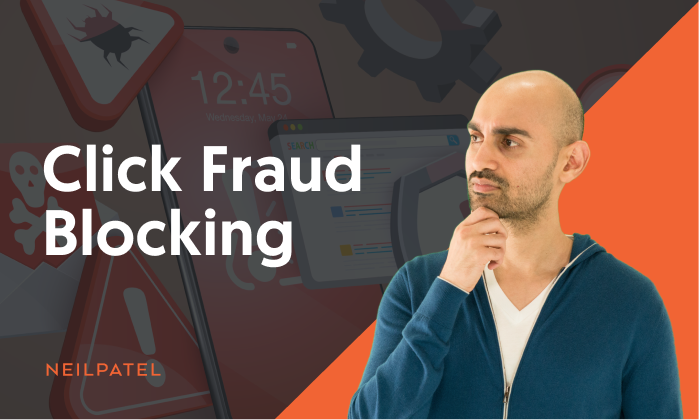
In the quest for more conversions, there’s an element most PPC advertisers overlook; invalid traffic—aka IVT, fake traffic, click fraud, or ad fraud.
You might have noticed the IVT column in your Google Analytics dashboard, although it isn’t displayed by default. And if you’ve ever searched for invalid traffic online, you have probably read Google or Facebook’s policies on the matter.
IVT is common. In fact, invalid ad traffic accounts for over ten percent of digital ad traffic.
Marketers often assume tech giants are in control of IVT. But are they? And how much actual invalid traffic really makes it through to your paid ads?
The Challenges of Digital Advertising
Although pay-per-click advertising is one of the most important elements of digital marketing, its reputation has taken a beating in recent years.
Marketers have watched CPC rise, an increase in competition, less-than-accurate tracking, and even noticed they’re paying for fake or fraudulent traffic that doesn’t drive results.
Plus, consumer groups have been campaigning for more privacy and control over our personal data.
So, where does this leave the average marketer?
First, some stats.
Between 40 and 60 percent of all internet traffic is from non-human sources. This includes bots, web crawlers, and other automated scripts. Despite the wide range, we can assume, on average, that around half of all web traffic is non-human.
It’s also estimated that ‘bad bot’ traffic outnumbers good bots, with bad bots conducting up to 25 percent of total internet activity. Bad bots can include spam bots, scalpers, or data harvesters, to the bots used for hacking, stealing logins, or committing ad fraud.
Added to this, marketers are also seeing their tracking and targeting capabilities changing as Google and Facebook adapt to the changing data laws around the world.
The growth of fake traffic combined with reduced targeting and analytics sounds like a recipe for a marketer’s headache.
But Facebook and Google are putting a stop to all this—right?
The Battle Against Fake Traffic
In 2021, the cost of click fraud and ad fraud was estimated to be around $42 billion.
The tech giants have long claimed their invalid traffic filters remove the worst of the bots and bad clicks.
And those IVT rates in Google Analytics might be encouraging.
Most marketers using Google Analytics see an IVT rate in the low single figures, somewhere between 2 to 8 percent.
But data from ClickCease shows an average of 14 percent of clicks on paid ads come from non-genuine sources, aka click fraud. Some industries even see click fraud levels way beyond this, with invalid clicks making up 60 percent of traffic.
Why the discrepancy? Surely the big ad platforms would want to put a stop to fake traffic?
The truth is, it’s complicated.
On the one hand, yes: Google, Facebook, and Microsoft do want to put a stop to fake traffic and protect their advertisers. After all, advertising revenue is by far the biggest earner for all of these companies.
However, the methods they use to filter invalid traffic are considered less strict than third-party click fraud solutions.
A common way for click fraud and ad fraud operators to get around the filters is by masking their location. Most ad platforms block traffic sources by IP address. Using a VPN, bots and click farms can cycle through multiple IP addresses to click repeatedly without getting blocked.
In fact, the click thresholds for the ad platforms are thought to be much more generous than using a third-party fraud blocker.
For the more cynical amongst us, there is also the issue of money.
Fake clicks are still a source of income to the ad platforms. And for many advertisers, the metric they’re looking for (beyond just conversions) is a good click through rate.
More clicks or impressions equals a bigger reach and a job well done, right?
For the ad giants, so long as advertisers see something is being done, then the fight against click fraud is winning in some way.
Well, I did say that’s the cynical view.
Protect Your Advertising Spend With Click Fraud Blocking
Blocking invalid traffic using a third-party solution is the most effective way to block bots, automated clicks, and even malicious traffic such as brand haters and competitors.
That’s why click fraud prevention is a secret weapon for search marketers.
For starters, the clicks lost to fake traffic are more than just lost budget.
Companies operating on a limited ad budget might find their daily or monthly ad spend exhausted prematurely. With their ads out of service, the missed opportunities will go to their competitors.
For those operating with a bigger ad budget, the issue of misattributed success comes into play.
How can you tell if those impressions or clicks resulted in conversions? Well, it’s increasingly difficult.
A tool such as ClickCease doesn’t just block bad traffic in real time and flag suspicious activity. It also offers another level of analytics marketers can use to examine their audience – something becoming more crucial as the tracking changes come into play.
Seeing which search terms attract the most invalid traffic, or how many VPN or out-of-geo clicks your ads, attract allows advertisers to adjust their targeting.
This applies to search and display ads on Google or Bing Ads, and social media ads such as Facebook or Instagram.
Marketers looking to get ahead of the trends, especially as the tracking changes come into play, should take the opportunity to see how click fraud blocking makes a difference to their campaign results.
Did you miss our previous article...
https://consumernewsnetwork.com/technology-news/o-que-so-influenciadores-tipos-exemplos-e-quanto-ganham






